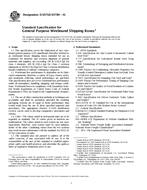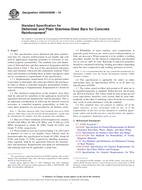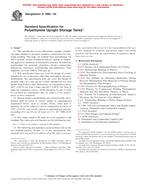1.1 This test method covers the measurement of the tearing strength of nonwoven fabrics by the tongue (single rip) procedure using a recording constant-rate-of-extension (CRE) tensile testing machine.
1.1.1 The CRE-type tensile testing machine has become the preferred test apparatus for determining tongue tearing strength. It is recognized that some constant-rate-of-traverse (CRT) tensile testing machines continue to be used. As a consequence, these test instruments may be used when agreed upon between the purchaser and the supplier. The conditions for the CRT-type tensile tester as used with this test are included in Appendix X1.
1.2 This test method applies to most nonwoven fabrics including those that are treated or untreated, including those heavily sized, coated or resin treated, provided that during the test, the fabric does not tear in the direction crosswise to the direction of the force applied. This test method may not be useful for highloft nonwoven fabrics. If the tear is not substantially lengthwise, the fabric shall be described as untearable in that direction by this test.
1.3 Tongue tear strength as measured in this method is the maximum single-peak force required to continue or propagate a tear started previously in the specimen. The reported value includes the simultaneous force required to shift fibers, break fibers, break fiber bonds and break fiber interlocks in nonwoven fabric. The reported value is not directly related to the force required to initiate or start a tear.
1.4 The values stated in SI units are to be regarded as the standard. The inch-pound units given in parentheses may be approximate.
1.5 This standard does not purport to address all of the safety concerns, if any, associated with its use. It is the responsibility of the user of this standard to establish appropriate safety and health practices and determine the applicability of regulatory limitations prior to use.
Product Details
- Published:
- 01/01/1995
- Number of Pages:
- 5
- File Size:
- 1 file , 35 KB


